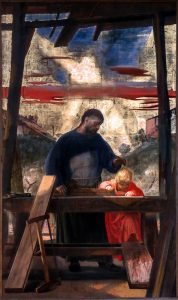Sister M. Joseph Fox is remembered as one of the most outstanding educators in our Newfoundland Mercy history.
 Irish-born Jane Fox arrived in St. John’s on October 21, 1881 to join the Sisters of Mercy, was received as Sister M. Joseph in March of 1882 and made profession of vows in April of 1884. She spent most of her religious life at Mercy Convent on Military Road, first teaching at Angels’ Guardian School and then at Our Lady of Mercy School, later known as Our Lady of Mercy Academy. Her reputation as an excellent teacher spread far and wide.
Irish-born Jane Fox arrived in St. John’s on October 21, 1881 to join the Sisters of Mercy, was received as Sister M. Joseph in March of 1882 and made profession of vows in April of 1884. She spent most of her religious life at Mercy Convent on Military Road, first teaching at Angels’ Guardian School and then at Our Lady of Mercy School, later known as Our Lady of Mercy Academy. Her reputation as an excellent teacher spread far and wide.
In 1898 Sister M. Joseph opened Newfoundland’s first commercial school with only one typewriter and five students. Despite the doubts expressed by many people about the wisdom of this venture, she was convinced that the need was there and that the time was right. Her astute business sense, her connections with the local business community and her firm belief that women had a place in the world of business gave her the drive to forge ahead. Her commercial school flourished, attracting students from all over the island. In a relatively short time, banks, offices and other business establishments in and outside St. John’s were looking for graduates of Sister M. Joseph’s school.
Sister M. Joseph was director of the commercial department of Our Lady of Mercy Academy until her sudden death on September 1, 1930. She was eulogized by all the newspapers of the day and tributes poured in from all sectors of the population.
The Daily News of September 4, 1930 spoke of her thus:
The passing of Sister Mary Joseph Fox removes an educationalist
of more than usual note from our midst, one whom the commercial
life of the city owes a great deal …
After her death, a stained-glass window of St. Jospeh was placed in the chapel of
our former Mercy Convent, a gift from a group of Sister M. Joseph’s former students honoring their teacher and mentor.
More about the contribution of Sisters to business education in the province can be read here
- Read more Sisters stories documenting our Newfoundland Mercy Story
La Hermana M. Joseph Fox es recordada como una de las educadoras más destacadas de la historia de la Misericordia de Terranova.
John’s el 21 de octubre de 1881 para unirse a las Hermanas de la Misericordia, fue recibida como Hermana M. Joseph en marzo de 1882 e hizo la profesión de votos en abril de 1884. Pasó la mayor parte de su vida religiosa en el Convento de la Misericordia en Military Road, primero enseñando en la Escuela de los Ángeles Guardianes y luego en la Escuela de Nuestra Señora de la Misericordia, más tarde conocida como Academia de Nuestra Señora de la Misericordia. Su reputación de excelente profesora se extendió por todas partes.
En 1898, la hermana M. Joseph abrió la primera escuela comercial de Terranova con una sola máquina de escribir y cinco alumnas. A pesar de las dudas expresadas por muchas personas sobre la conveniencia de esta empresa, ella estaba convencida de que existía la necesidad y de que era el momento adecuado. Su astuto olfato para los negocios, sus conexiones con la comunidad empresarial local y su firme convicción de que las mujeres tenían un lugar en el mundo de los negocios le dieron el impulso necesario para seguir adelante. Su escuela de comercio floreció y atrajo a estudiantes de toda la isla. En relativamente poco tiempo, bancos, oficinas y otros establecimientos comerciales dentro y fuera de St. John’s buscaban graduadas de la escuela de la hermana M. Joseph.
La Hermana M. Joseph fue directora del departamento comercial de la Academia de Nuestra Señora de la Misericordia hasta su repentina muerte el 1 de septiembre de 1930. Fue elogiada por todos los periódicos de la época y le llovieron homenajes de todos los sectores de la población.
El Daily News del 4 de septiembre de 1930 hablaba así de ella:
El fallecimiento de la Hermana Mary Joseph Fox elimina a una educadora…
a la que la vida comercial de la ciudad debe mucho…
comercial de la ciudad le debe mucho…
Después de su muerte, se colocó una vidriera de San José en la capilla de nuestro antiguo Convento de la Misericordia.
Jospeh en la capilla del antiguo Convento de la Misericordia, regalo de un grupo de antiguas alumnas de la Hermana M. Joseph en honor de su maestra y mentora.
Puede leer más sobre la contribución de las Hermanas a la educación empresarial en la provincia aquí
- Lea más historias de Hermanas que documentan nuestra Historia de Misericordia de Terranova


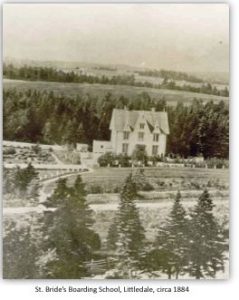 At this time St. Bride’s College, Littledale, established in 1884 by the Sisters of Mercy as a boarding school for young women interested in the teaching profession, was becoming increasingly important in the educational and cultural life of Newfoundland. The need for highly qualified teachers for Littledale was a constant concern for the bishop. Consequently, he was quick to welcome Sarah to the diocese, not for the Presentation Sisters but for the Sisters of Mercy.
At this time St. Bride’s College, Littledale, established in 1884 by the Sisters of Mercy as a boarding school for young women interested in the teaching profession, was becoming increasingly important in the educational and cultural life of Newfoundland. The need for highly qualified teachers for Littledale was a constant concern for the bishop. Consequently, he was quick to welcome Sarah to the diocese, not for the Presentation Sisters but for the Sisters of Mercy.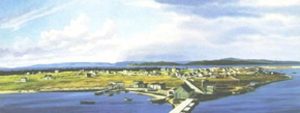
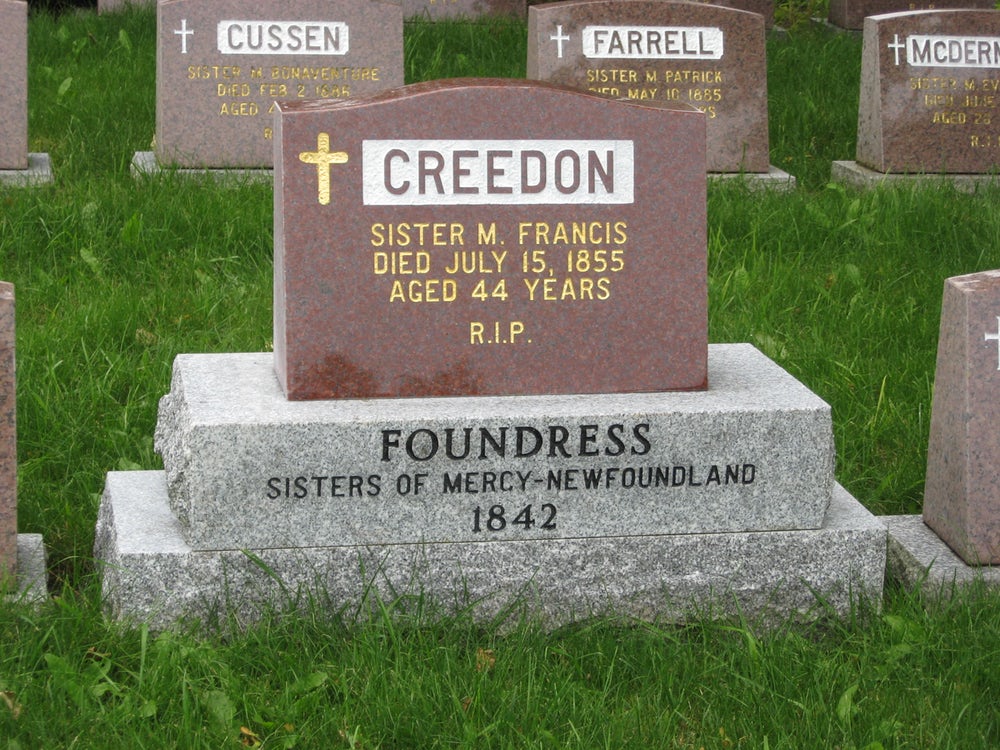 Francis was,
Francis was, 

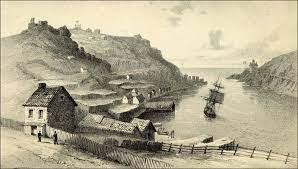 What must have been their thoughts as they looked upon the forbidding landscape with its towering rocky c liffs and craggy head lands ? Although they had seen poverty in Ireland, t he abject poverty of this place with its rude shacks and derelict fishing stages perched on the side of the hills, would have seared their hearts and minds. Sister Francis had lived in the colony for six years, but for Sisters Ursula and Rose the scene before them must have caused some dismay and distress.
What must have been their thoughts as they looked upon the forbidding landscape with its towering rocky c liffs and craggy head lands ? Although they had seen poverty in Ireland, t he abject poverty of this place with its rude shacks and derelict fishing stages perched on the side of the hills, would have seared their hearts and minds. Sister Francis had lived in the colony for six years, but for Sisters Ursula and Rose the scene before them must have caused some dismay and distress.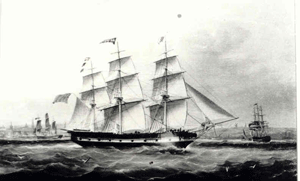 ¿Qué debieron de pensar al contemplar el imponente paisaje de acantilados rocosos y escarpados promontorios? Aunque habían visto la pobreza en Irlanda, la abyecta pobreza de este lugar, con sus rudimentarias chozas y sus abandonadas etapas de pesca encaramadas en las laderas de las colinas, les habría abrasado el corazón y la mente. La hermana Francis había vivido en la colonia
¿Qué debieron de pensar al contemplar el imponente paisaje de acantilados rocosos y escarpados promontorios? Aunque habían visto la pobreza en Irlanda, la abyecta pobreza de este lugar, con sus rudimentarias chozas y sus abandonadas etapas de pesca encaramadas en las laderas de las colinas, les habría abrasado el corazón y la mente. La hermana Francis había vivido en la colonia
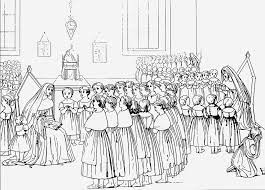 By this time, the Sisters had been in Newfoundland for almost a year, a year in which they devoted themselves to the visitation and care of the poor and the sick of the town, traversing the narrow streets and visiting the rude shacks in which many of the Irish Catholics lived. Forty-two pupils were enrolled when the school opened, and in the following year fifty-five students were in attendance.
By this time, the Sisters had been in Newfoundland for almost a year, a year in which they devoted themselves to the visitation and care of the poor and the sick of the town, traversing the narrow streets and visiting the rude shacks in which many of the Irish Catholics lived. Forty-two pupils were enrolled when the school opened, and in the following year fifty-five students were in attendance. The Fourth Sunday of Easter, also known as Good Shepherd Sunday, has been celebrated as Vocation Sunday since 1964.
The Fourth Sunday of Easter, also known as Good Shepherd Sunday, has been celebrated as Vocation Sunday since 1964. 